|
Posted: 14 Feb 2013 06:45 PM PST
Until now we’ve only had a promotional shot to go on, but the full featured trailer has finally been uploaded to YouTube, and now we’re feverishly awaiting June 7th. That’s the date the film opens in theaters everywhere, and you can bet we’ll be trying our hardest to get to the box office before tickets sell out. Take a quick look at the two and a half minute trailer above, and be sure to discuss it among yourselves in the comments section below. |
|
Posted: 14 Feb 2013 05:54 PM PST
SugarSync 2.0 for desktop computers has finally launched after a lengthy beta period, and the experience has been redesigned from the ground up. The features of the new desktop app include easier navigation, an easier setup using intuitive drag-and-drop controls, SugarSync Drive, a virtual cloud drive for storing all your digital goods, better and deeper sharing of files and folders, cloud search, improved experience for viewing and handling photos, and more.
 Alongside that, the Android counterpart has undergone a complete makeover with version 4.0. The Android app has been stylized to look similar to the desktop version, and also has the same improved photos experience, cloud searching, backup and sync features which interface directly with your device’s SD card, and more. You can grab the free application from the Google Play Store here, and don’t forget to get the desktop suite for your Mac and Windows PC to bring the experience full circle. Head to SugarSync’s site to read more about the newest changes — you might want to grab a light drink or some popcorn as there’s quite a bit to get through. |
|
Posted: 14 Feb 2013 05:35 PM PST
After slaving away at Carbon, the app sync and backup app, Koushik Dutta has turned back to his age-old classic ROM Manager to add some much needed features. For starters, TWRP — or, the TeamWin Recovery Project — is now supported, meaning ClockworkMod Recovery is no longer the only recovery you can use to jump straight to a custom recovery using ROM Manager.
 To get started, all you have to do is enable the “setup recovery” button, and ROM Manager will acknowledge that you’re using TWRP. TWRP is a great custom recovery that enables the use of touch and other nice features that have much of the ROM development world captivated. ROM Manager also supports incremental ROM updates, so developers can issue smaller upgrades whenever bug fixes or small feature updates need to go out. This means you could download a 20MB file to get up to the latest version of CyanogenMod instead of a full 180MB+ file if the situation calls for it. This is quite useful for anyone on a slow connection or on a limited data plan, so we’re hoping every developer in the world begins to distribute update files for their ROMs in this manner. That said, Koush made a point to remind us that both these features are still in beta, so don’t expect things to work 100% correctly 100% of the time. Anything that happens to your device as of the result of using ROM Manager is your own responsibility, so if you’re fine with that then be sure to download it from the Google Play Store and try it for yourself. [via Google+, Thanks Chris!] |
|
Posted: 14 Feb 2013 04:53 PM PST
Our friends at Qualcomm published a blog post letting us know why we might be noticing some relatively fast charging times in several smartphones lately. Well, apparently, it’s not magic like I originally thought (my dreams of being able to tap into my inner David Blaine will have to be put on hold). Instead, it’s due to Qualcomm’s Quick Charge 1.0, a technology the company gained access to when it acquired Summit Microelectronics last summer.
 Quick Charge 1.0 technology embedded into the PMIC — or power management integrated circuit — of Qualcomm’s latest chipsets. Quick Charge allows Qualcomm to reduce the charging time by up to 40% without needing new charging cables or USB ports. Qualcomm says “any phone or tablet's charging port can be enabled with Quick Charge.” In fact, some devices are already benefiting, such as the Samsung Galaxy S3, HTC One S, HTC DROID DNA, Nexus 4 and more. Battery life is something we’re always hoping is improved over time as devices become more advanced and power hungry, so we’re glad to see Qualcomm putting a big focus on that for the future. The latest S4 chipsets have already made very exceptional strides in power consumption, so Qualcomm feels like the other side of the battery equation — the juice coming from the wall outlet — deserves some attention. That said, the chipset vendor says it isn’t even close to being done as the company will have more exciting battery news for us on its blog next week. We imagine these announcements will come just in time for Mobile World Congress, so we’ll be keeping a very close eye on Qualcomm to see what, exactly, is in store. Be sure to circle back here for the latest on all of that as we look to cover every drip of exciting news from here until the end of times. Look below for a list of devices which currently support Quick Charge 1.0. Acer |
|
Posted: 14 Feb 2013 03:59 PM PST
Yesterday, we learned that the HTC DROID DNA would be receiving a software upgrade over-the-air, and now the upgrade is rolling out to folks all over the land of the free and the home of the brave. It’s 103MB in size, and should bring with it many important bug fixes and improvements.
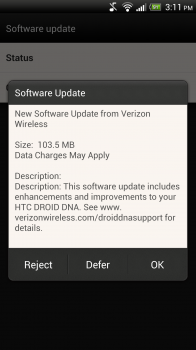 Verizon’s changelog says to expect improvements to mobile hotspot, improvements to audio quality for wired headphones and headsets, improvements to Bluetooth connectivity and volume controls, improved WiFi connectivity, enhanced reliability and stability for the contacts list, improvements to zooming in the default browser, a fix to display the correct timestamp on incoming messages, improved functionality for the Recent Apps feature and more. It’ll be the same old song and dance for pre-update prep: get that battery up to at least 50% and get yourself up and running on a WiFi signal of some sort before attempting to download and install it. Let us know how things are going for you in following the upgrade in the comments section below — we hear that wireless hotspot has been a real stinker for some of you. [via XDA, AndroidForums.com] |
|
Posted: 14 Feb 2013 03:40 PM PST
The official Facebook for Android application has been upgraded in the Google Play Store to make life easier on those who tend to change their profile cover photo quite often. Users can now make the change right from their timeline instead of having to dig through settings and go through the grueling, nerve-wrecking task of pressing button upon button upon button.
 Prior to the change, users had to first upload the photo into an album, then go through the process of applying the cover photo. It’s a bit odd to get an upgrade for just one change, but remember that the folks at Facebook wanted to commit to smaller, more frequent updates instead of making users wait eons for a smorgasbord of features. Of course, we’re patiently awaiting a big app redesign that will bring the UI into the age of Holo, though considering how long it took for us to get a fully-native user interface in the first place we won’t be holding our breath to see that anytime soon. That said, today’s upgrade is waiting for you in the Google Play Store so get over there to check it out. |
|
Posted: 14 Feb 2013 03:38 PM PST
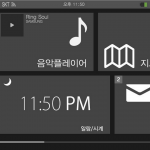 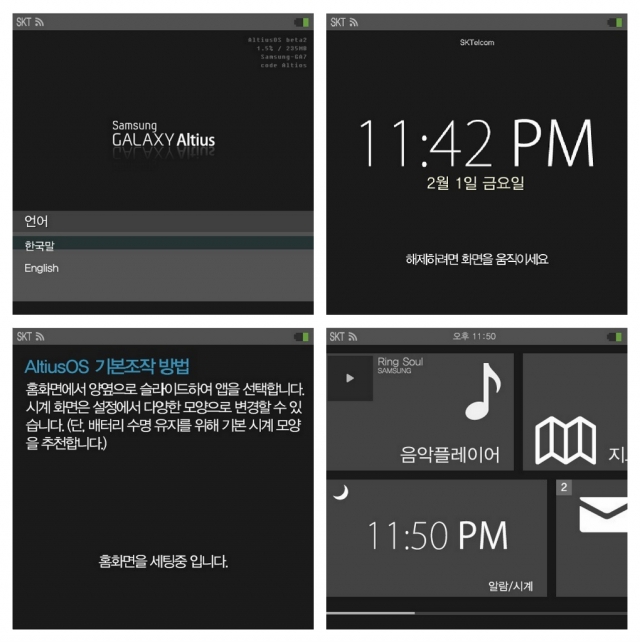 There’s been many a murmuring around the blogosphere of a possible Apple iWatch and with Samsung’s hands in just about every hardware configuration these days, it wouldn’t surprise us if they were working on a smartwatch of their very own. In fact, we kind of suspected something along those lines after it was rumored that Project J — once an alias of the Galaxy S4 — could now refer to a line of Samsung devices dubbed “Altius.” Today, a collection of 500×500 screenshots is causing some stir, showcasing a tiny UI from something labeled as the “Galaxy Atlius.” Interestingly enough, these apparent images originated from Samsung’s homeland of South Korea, grabbed from a message board discussing the possibility of a Samsung branded smartwatch. Really, we don’t have much to go on, but you’ll notice SKT and SKTelecom (South Korean operators) in the upper right hand corner of the grabs, hinting at the possibility of some kind of network connectivity. Also, we can’t be sure if the OS on Samsung’s smartwatch — dubbed AltiusOS from the screenshots — is even Android-based (like the Motorola ACTV), or if it simply offers connectivity to a compatible Android handset. What we do know is, based on these screenshots, the watch will feature a touch-based OS, as shown by the big icon panels similar to Windows Phone, and the horizontal page indicator along the bottom. If it turns out these screen grabs are legit, it’s very possible we could see this Samsung smartwatch launch alongside the Galaxy S4 and Galaxy S4 Mini, rumored to hit store shelves as early as April. What do you guys think? We’ve seen quite a few new entries to the connected watch category these past few months with the I’m Watch, Pebble, etc.. Do you think a smartwatch offered from Samsung would entice you? [via SamMobile] |
|
Posted: 14 Feb 2013 03:15 PM PST
What would you say if you knew a developer had record of your full name, your general vicinity (like your city and province) and email address each time you purchased an app from them? That’s exactly what seems to be happening in the Google Play Store according to one developer. Developer Dan Nolan — a Sydney, Australia native — was shocked to learn that he was getting this information about each and every user who purchased his app.
Nolan says he doesn’t feel comfortable with the information, stating: “with the information I have available to me through the checkout portal I could track down and harass users who left negative reviews or refunded the app purchase.” We imagine the biggest of his worries doesn’t have quite that much to do with any worries about harassment, though. What if a malicious developer found a flaw in the way this information is transferred to the developer and created an app to intercept that?  Furthermore, there is concern that users nor developers are aware that this information is being exchanged before it actually happens. The fact that neither side can opt-out of receiving this information is more troubling, says Nolan. The developer says the information being given up is quite robust and overkill compared to what Apple gives you, which is a simple report of how much you’ve gathered in sales and how those sales stack up from one country to the next. Google didn’t quite comment on these claims, but interestingly enough the Mountain View company contacted News.com.au to clarify that this wasn’t a “flaw,” but a feature, and that the outlet should change its title and leading paragraph accordingly. Nolan speculates that this behavior exists because Google Play orders are treated just like regular Google Wallet/Checkout orders, and those particular sales sometimes require that information for shipping purposes. TMI?What’s my take on it? Well, it’s quite simple: what’s the big deal? Folks have no problem submitting their full name, email address, billing and shipping addresses and more information when ordering physical items, so why shiver in fear when an app developer has information to your name, your general location, and your email address?Perhaps it’s a case of only wanting merchants to have “need-to-know” information. Perhaps users fear irresponsible developers will abuse that information or sell it to a third-party marketer. Those are very good points alone, but are they enough to be up-in-arms about? I suppose that’s up to each individual to figure out for themselves, but I personally feel like there’s nothing to worry about. That said, I understand a user wanting to at least be told that this information is being sent, and also wanting a way to opt-in or opt-out of that. Google obviously felt it wasn’t that big of an issue when it implemented the system, but perhaps it’s something for the company to revisit to avoid more hot water in the risky and uncertain waters of information privacy in this digital day and age. What about you? Do you fear developers have access to too much information about the people who are buying apps from them, or are people overreacting to a non-issue? The comments section is always open to any and all healthy discussion, so keep it light and respectful, and let your thoughts be heard below! [Thanks to everyone who sent this in!] |
|
Posted: 14 Feb 2013 01:50 PM PST
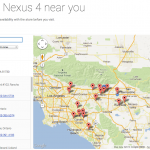  If your search for the elusive Nexus 4 hasn’t proven fruitful, the official Google Nexus Twitter account tweeted only moments ago a new way for finding their latest flagship in your area: a brand new Nexus 4 store locator page. That’s right, simply punch in your address or zipcode, and using the raw power of Google Maps, Google will show you the nearest location the Nexus 4 is currently available. There’s only 1 problem. It’s only pulling up a list of T-Mobile locations in your area. Call me crazy, but wouldn’t it be easier to just open Google Maps and type in “T-Mobile?” Also, even when a T-Mobile location is shown, you’ll still want to call the store ahead of time to make sure they have available stock. So, as cool as this almost was, just don’t forget Nexuses are also available from Costco, Best Buy, and Walmart. I guess where the store locator proves a bit more useful is when using the dropdown menu to locate the Nexus 7, which will pull up a variety of retailers ranging from Gamestop to Staples. Nexus 4′s locations need to catch up. [Twitter] |
|
Posted: 14 Feb 2013 01:50 PM PST
Regional carrier US Cellular has announced that more cities and towns in the United States would be lit up with pristine 4G LTE this year. Select cities in California, Kansas and Nebraska will get 4G LTE love for the first time, and existing deployments in cities and towns in Illinois, Iowa, Maine, Maryland, Missouri, North Carolina, Oklahoma, Oregon, Tennessee, Texas, Virginia, Washington, West Virginia and Wisconsin will get expansions.
US Cellular didn’t get into specifics about who, exactly, should be expecting these new launches and expansions, nor did the wireless carrier tell us when it would happen. Still, it sounds like a pretty significant amount of its customers will be doused in 4G LTE goodness this year.  The carrier expects to have folks in over 3,800 cities and towns covered by the end of this year. US Cellular also revealed that 61% of its consumer base has access to 4G LTE, and that number is expected to rise to about 87% by the end of this year. The network upgrades should be complete at some point in 2014. It’s an impressive timeline for a regional carrier, but US Cellular’s one of the very few carriers in that category with a real shot to break into the “big 4″ here in the United States, and it’s this kind of acceleration it’ll need if it wants to challenge T-Mobile for the 4th spot in the years to come. Read on for full press details.
|
|
Posted: 14 Feb 2013 01:01 PM PST
  With close to 4,000 5-star ratings and between 100,000 – 500,000 downloads in the Google Play Store, it’s safe to say Mediocre’s smash hit Sprinkle was a huge success on Android. A lighthearted puzzle game, Sprinkle allowed players to harness the power of water to solve challenges and help save an alien world from a cataclysmic event. I mentioned back at E3 2011 that Sprinkle would rise to an “Angry Birds” level of success and I wasn’t too far off. Mediocre’s seen another success since then, releasing Granny Smith to equally rave reviews and now it appears they are back in the studio, hard at work on followup to the original game that put them on the map. Yes, it looks like Sprinkle 2 will soon be gracing our mobile devices and although details are somewhat scarce, there is a new gameplay mechanic the boys at Mediocre are looking to introduce in part 2: water… even more of it. Apparently players will now be able to travel between islands surrounded by oceans of water, solving puzzles using objects that float (or sink) and of course, putting out those pesky fires before they cause too much damage.  As always, we’re more than excited to see what Mediocre will deliver. We’ve been big supporters of their work since before Sprinkle hit the (then) Android Market and we’ll keep our eyes peeled for further developments. [MediocreGames] |
|
Posted: 14 Feb 2013 12:56 PM PST
DashClock Widget, a beautiful new lock-screen and home-screen widget that’ll display your most important information, just came out, and its open-source goodness has already been taken advantage of by at least one third-party application. Marc Selwan published a hands-on look of DashClock Widget a couple of days ago, so be sure to find more info about that here.
 Well, Falcon Pro is the first app to tap into the power of the widget as it’s gotten a swift update in the Google Play Store. With DashClock Widget and the latest version of Falcon Pro, the widget will display the amount of tweets, mentions and direct messages you have at a glance. It’s nothing that you can’t get from simply opening Falcon Pro or looking at the periodic notifications you’ll get, but some users will find value in having this information right in their faces on the lock-screen and home-screen. As with any Falcon Pro upgrade, there’s more to look forward to. You can now copy tweets if you so desire, and a few pesky bugs have been fixed. Specifically, you shouldn’t have many more issues with older tweets not loading, the issue with the app force closing when looking at a direct message list has been fixed, and things have been tightened up to make list positioning more reliable, accurate and consistent. If Twitter hasn’t already scared you away from third-party clients with its new API limitations and you don’t mind paying $.99 be sure to give Falcon Pro a download here. As for DashClock Widget, head here if you’re on Android 4.2 or higher. |
|
Posted: 14 Feb 2013 12:27 PM PST
ARCHOS has blossomed into one of the better affordable tablet brands there is, and the company has stayed true to its roots with the launch of a new line of “Platinum” tablets. Starting at $200, these tablets will catch your attention with a very nice list of specs to look forward to. All of the tablets feature an HD IPS display, a 1.2GHz quad-core chipset with an 8-core GPU, 2GB of RAM, Android 4.1 Jelly Bean mini-HDMI ports and microSD card slots, and more.
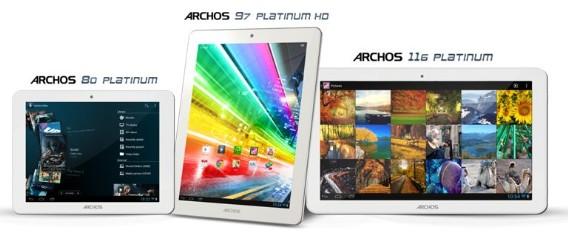 Most of the differences will come in display size and resolution. You can get the 8-inch 1024×768 display version for $200 starting later this month. $300 will net you the 9.7 inch 2048×1536 display, a kit Archos says is “comparable to the iPad’s Retina display, but is 40% less expensive.” That particular unit will also be available later this month. Finally, an 11.6-inch kit with 1920×1080 resolution will be available in April for $350. Without knowing the make and model of the chipset we’re not sure what, exactly, to expect in terms of performance, but for these prices we imagine that’s not much of a concern for anyone who’s going to be interested. We’ll be on the lookout for exact arrival dates for these gems, but read on for full press details in the meantime. Let us know if ARCHOS has finally succeeded in catching your eye with its new line of tablets. ARCHOS Introduces the New Platinum Range |
|
Posted: 14 Feb 2013 09:49 AM PST
 One of the first of what will likely be many release date rumors for the upcoming HTC One (M7) has surfaced courtesy of information gleaned by HTC Source. According to their report, the One will share a simultaneous launch on Sprint, T-Mobile, and AT&T on March 22nd. The phone will come in two color options — black and white/silver — and will be available in both 32GB and 64GB versions. The former will see a standard $199 on contract price point while the latter will sell for $299. DroidLife speculates that Verizon might not see the HTC One based on buzz they are picking up. The carrier could possibly receive a Droid-labeled variant, but there are no indications of such a phone at this time. [via HTC Source] |
|
Posted: 14 Feb 2013 08:55 AM PST
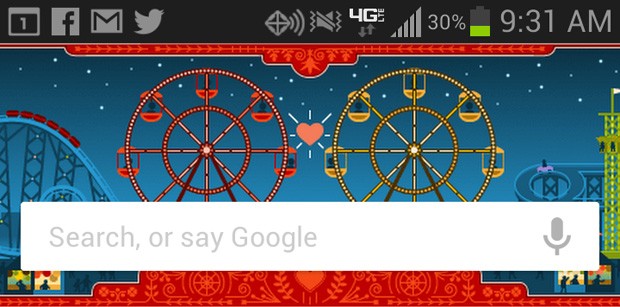 Unless residing in a major city with custom imagery, Google Now users have been treated to the same generic landscape as the app’s header since its launch. Yes, there is some variety depending on the time of day, but that’s about the extent of things. Google seems to be headed in a different direction now, though, as some users are reporting the appearance of Google Doodles behind Google Now’s search bar. The doodles add a nice touch (even if they are unlikely to include the interactive features of the web version), but part of us would be a bit sad to see the background replace the current custom images entirely. Perhaps it’s all for the sake of variety and we will end up seeing a mix of all. [AndroidCentral via Engadget] |
Sunday, February 17, 2013
Update - 324
Subscribe to:
Post Comments (Atom)
No comments:
Post a Comment